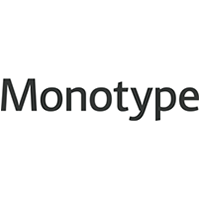
The 58th annual conference by the Association Typographique Internationale (ATypI) from September 17 to 21, 2014, was held in Barcelona – for the third time in the history of ATypI, after 1972 and 1995. It was a great experience. With this year's theme, Typographic Dialogues, ATypI invited students and professionals to participate in a delightful mixture of workshops, lectures, social events and exhibitions, and to explore the wider fields of design and typography together.
The first two days with practical, technical and educational topics plus workshops took place in the BAU Design College; then for the three main conference days with longer lectures focusing on history, international strategies and research, we moved to the Museu del Disseny (Design Museum), Barcelona. Yes, the main official language in Barcelona has become Catalán, followed by Spanish, then English – the first thing you notice as a visitor at the airport.

The sky in Barcelona is blue almost all the time and is called "cel" – which is Catalan. Or "cielo" in Spanish.
Day 1: Technical advice, lots of user-centered lectures, and a corporate community programme that comes as surprise
If you take a look at the presentations programme and see the complete list of speakers and topics, you will realize it was a lot. It is simply not possible to give a complete survey of everybody and everything, sorry! I picked out my personal favorites, pars-pro-toto style.
A good example of the excellent technical talks was Parametric typefaces in a nutshell by Berlin-based Thomas Maier, "a short history of formula driven typefaces". Building on the premise that designing a font means making decisions and setting at least one rule, Thomas Maier reminded us of beautiful results such as
Donald E. Knuth's Metafont (1979), Euler Metafont (1983) by Knuth, Hermann Zapf and David Siegel, Donald Knuth's Punk Metafont (1988) FF Beowolf by Erik van Blokland and Just van Rossum (1989, Random PostScript-Type-3-Font),Erik van Blokland's Flipper-Font FF Kosmik (1993),Zuzana Licko's Variex (1988, PostScript-Type-3-Font with varying stroke thickness).

For Metafont, Donald E. Knuth (in 1979) created different styles by varying the parameters and by increasingly random pen positions.
Maier also provideds information about the discussions around Metafonts, Metamathematics, and Metaphysics (in which people like Douglas R. Hofstadter were involved), classification systems for example by Benjamin Bauermeister (1988, Panose-1-parameters) or Larry Applegate, Ernie Brock, and Robin Henson (Ares FontChameleon 1993–1997, with 26–220 base fonts), and interpolation systems.
Multiple Masters: Remixing the rules
The most popular interpolation systems have been Ikarus (1981) by Peter Karow and URW, the famous Adobe Multiple Master technology (1992), and Apple QuickDraw GX Axes (1995). Yet Stephenson Blake used Pantographic Interpolation as early as 1930, Peter Karow with Multitype in 1992. In 1988, together with Hermann Zapf, Karow set up their "hz-program" with – as Thomas Maier sums it up – "smart rules for hyphenation and justification" including
smart whitespace, balanced right and left marginsoptical scalingsmart condensing and expanding of letters for more consistent justificationkerning on the flybalance ragged lines in left aligned lineshyphenation per paragraph, not per linethe algorithm running backwards over the text.

Jam by Erik van Blokland with three axes: "Bang" is the weight, "Crumble" causes some of the objects to deflate, "Splatter" causes one or two objects to come into view as random bits of dust (picture from Thomas Maier's presentation).
Maier also provided theoretical background on interpolation, the best-known and probably earliest model being Gerrit Noordzij's The Stroke of the Pen (1985) which explores the type space of handwriting by dynamic translation, expansion, and rotation. The book cover was designed by Petr van Blokland as an intern at URW at that time, working on interpolation in Ikarus – just to give you the big picture.
Interpolation tools today
Today, probably the best-known player in the field is
Erik van Blokland with his Superpolator.
But there are more to be tested (if you haven't yet), like
Font Remix Tools, developed by Tim Ahrens.
Further tools, adding modular to the parametrical techniques, include
Frank Blokland's Lettermodel,Frederik Berlaen's Kalliculator (2006),Robert Meek's Fontstruct,Metaflop Modulator by Simon Egli, Marco Müller and Alexis Reigel in 2012.
They offer different features or different combinations of features, all worth trying out. This was possible for ATypI attendees the same day at the workshops at BAU Design college. Among others, Frederik Berlaen explained what the possibilities are with RoboFont and Erik van Blokland presented a Superpolator3 workshop.


Metapolator allows designers to use Metafont technology without have to write Metafont code.
For more information and compilations of Metafonts (also otf), Thomas Maier recommends
ctan (Comprehensive TeX Archive Network)gust (TeX User group Poland)
concluding his presentation with the statement that "it's not about rules, it's about exceptions".
Homeless Fonts
Monotype's Bill Davies presented a surprising project in collaboration with the Arrels foundation. Founded in 1987, Arrels is devoted to bring attention to, and help homeless people in the city of Barcelona. Together they support a local community project which actually is a font project. Arrels set up workshops with homeless people to turn their handwriting into typefaces – the handwriting lifted from the cardboard panels they use to beg for money, which attracted their attention.

The Homelessfonts website is worth taking a look – for its design, the videos, and the professional and touching presentation.
When I asked him about it during a coffee break, Bill Davies explained he was so impressed by the project that he decided to not only support it and visit the local workshop, but also talk about it in public – a new thing at Monotype. Because their other community projects were never so close to their core business, they never advertised them. However, the Homelessfonts project will come to an end at some point, or – according to Bill – will have to evolve and change, as it makes little sense to continue producing countless handwriting fonts. So what's up next? Arrels is already planning to build furniture with the homeless, thus making use of and improving on their carpenter skills. Bill Davies is committed to keep supporting future endeavors by the organization.
This will also be continued. Look forward to Part 2, reporting about the educational emphasis of the ATypI Barcelona lectures.

FontShop's very own Andreas Frohloff – famous for the popular calligraphy workshops he gives at the TYPO Berlin conferences – took the opportunity to participate in a workshop himself…









